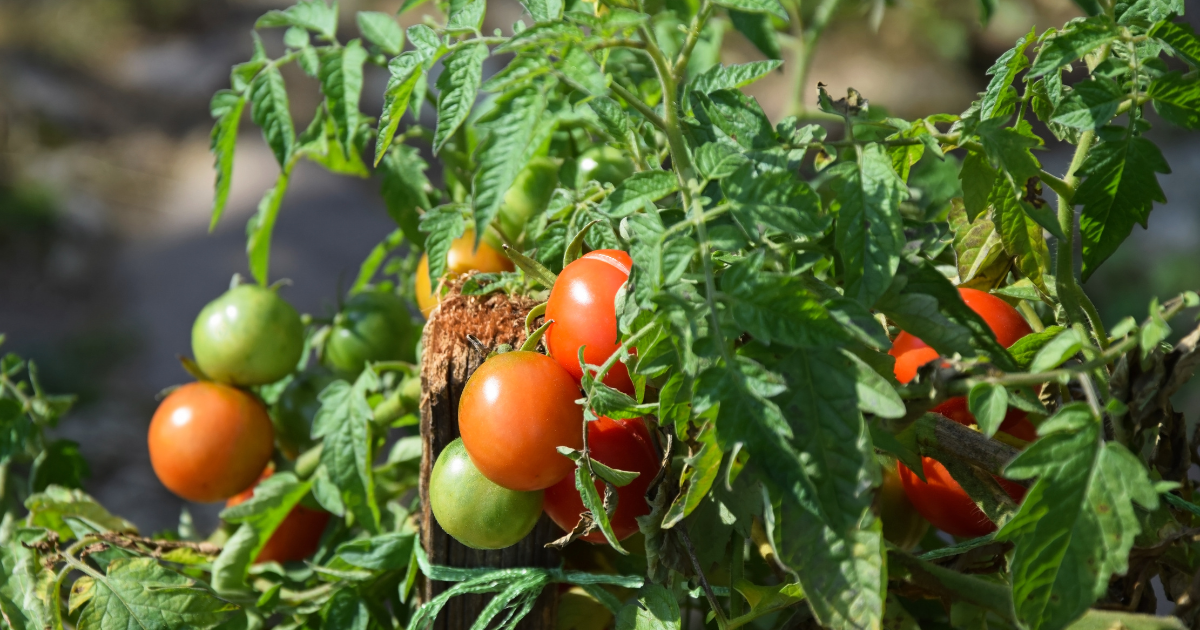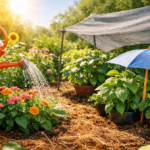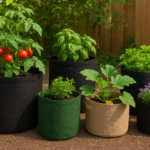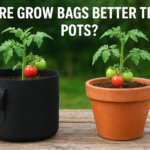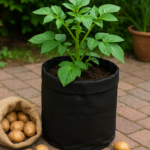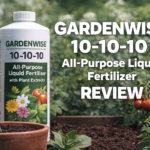Timing is critical when cultivating a thriving garden, especially when planting delicate seeds like tomatoes. Starting tomato seeds indoors can significantly enhance your gardening success by providing a controlled environment conducive to optimal growth. In this guide, we’ll explore the art of timing and offer invaluable tips and tricks for planting tomato seeds indoors.
From understanding the ideal conditions for germination to mastering the transplanting process, we’ll equip you with the knowledge to confidently kickstart your tomato-growing journey. Whether you’re a seasoned gardener looking to extend your growing season or a beginner eager to cultivate your own fresh produce, planting tomato seeds indoors opens up a world of possibilities.
Join us as we delve into the intricacies of indoor tomato seed planting and unlock the secrets to bountiful harvests year-round.
About Tomato Seed Planting

Tomato seed planting is a pivotal stage in gardening, laying the groundwork for a successful harvest. Begin by selecting appropriate tomato varieties, considering factors like space and preference. Timing is crucial; start seeds indoors 6-8 weeks before the last frost. Utilize well-draining soil, planting seeds at a depth of 1/4 inch, and maintain consistent moisture and warmth to facilitate germination. As seedlings emerge, ensure they receive ample light. When they outgrow their initial containers, transplant them into larger pots or the garden. By adhering to these guidelines and providing attentive care, you’ll soon reap the rewards of your efforts with a plentiful supply of homegrown tomatoes.
What month is best to plant tomato seeds?

The best month to plant tomato seeds depends on your location and region’s climate. In general, it’s recommended to start tomato seeds indoors approximately 6-8 weeks before your area’s last expected frost date. For many regions, this typically falls in early spring, making February or March ideal months to begin indoor tomato seed planting. Starting seeds indoors during these months ensures that seedlings are strong and healthy by the time the weather warms up enough for outdoor transplanting. However, it’s essential to consult local gardening resources or extension offices to determine the most suitable timing based on your growing zone.
Do tomato seeds need sunlight to grow?

Yes, tomato seeds do not require sunlight to grow initially. Instead, they rely on moisture and warmth to germinate. Once the seeds have sprouted and seedlings emerge from the soil, they do require sunlight to grow into healthy plants. Light is essential for photosynthesis, the process by which plants convert light into chemical energy to fuel growth.
Therefore, once the seedlings have emerged, providing them with adequate sunlight or artificial light sources, such as grow lights, is crucial to ensure robust growth and development. With sufficient light, tomato seedlings may become strong and energized, compromising their overall health and productivity.
Advantages of Starting Tomato Indoors

Starting tomato seeds indoors offers several advantages for gardeners:
Extended growing season:
Gardeners can extend the growing season by initiating the growth of tomato plants indoors. Starting seeds indoors allows for an early start of the increasing process, giving plants more time to mature and produce fruit. This can result in an extended harvest period, providing a longer window to enjoy fresh tomatoes from the garden.
Control over environmental factors:
Indoor seed starting provides gardeners with greater control over environmental conditions. Factors such as temperature, humidity, and light can be carefully monitored and adjusted to create the optimal growing environment for tomato seedlings. This control helps minimize plant stress and promotes healthy growth, ultimately leading to stronger and more productive tomato plants.
Preparing for Indoor Planting
Preparing for indoor planting is essential to ensure the success of tomato seedlings. Here’s how to do it:
Choosing the right containers: Select containers that provide adequate drainage and space for the growing roots of tomato seedlings. Options include seed trays, cell packs, or individual pots. Ensure the containers are clean and sterilized to prevent the spread of diseases.
Selecting quality soil: Use a high-quality potting mix specifically formulated for seed starting. Avoid using garden soil, as it may contain pests, diseases, or weed seeds that can harm delicate seedlings. Look for a well-draining mix rich in nutrients to support healthy growth. Additionally, consider adding perlite or vermiculite to improve aeration and drainage in the soil. Choosing the right containers and soil will create a favorable environment for tomato seedlings to thrive indoors.
Sowing Tomato Seeds
Sowing tomato seeds indoors is a straightforward process that requires attention to detail to ensure successful germination and healthy seedling growth. Here’s a step-by-step guide:
- Prepare your containers: Fill clean, sterilized containers with a high-quality seed starting mix, leaving a small gap at the top for watering.
- Moisten the soil: Before sowing seeds, lightly moisten the soil to provide a conducive environment for germination.
- Plant the seeds: Make small indentations in the soil, approximately 1/4 inch deep. Place one or two tomato seeds in each indentation, then cover them lightly with soil.
- Label and water: Label each container with the tomato variety and planting date. Water the soil gently to ensure even moisture throughout.
- Provide warmth and light: Place the containers in a warm location, ideally around 70-80°F (21-27°C). Additionally, provide ample light for the seeds to germinate. Consider using grow lights or placing the containers near a sunny window.
- Maintain moisture: Keep the soil consistently moist but not soggy. Avoid overwatering, as it can lead to damping off disease and other issues.
- Monitor progress: Check the containers regularly for signs of germination. Once the seedlings emerge, provide adequate light and moisture to support healthy growth.
Providing Adequate Light and Temperature
Providing adequate light and temperature is crucial for the healthy growth of tomato seedlings indoors. Here’s how to ensure optimal conditions:
Light:
Tomato seedlings require plenty of light to thrive. Place them in a sunny location where they can receive at least 6-8 hours of direct sunlight daily. If natural light is limited, supplement with grow lights 2-4 inches above the seedlings. Keep the lights on for 12-16 hours daily to mimic daylight.
Temperature:
Maintain a consistent temperature range of 70-80°F (21-27°C) for optimal growth. Use a thermometer to monitor the temperature in the growing area and adjust as needed. Avoid placing seedlings near drafts or cold windows, as fluctuations in temperature can stress the plants. Providing a warm and stable environment encourages healthy growth and prevents issues such as stunted growth or wilting.
Caring for Seedlings
Caring for seedlings ensures their healthy development into strong and productive tomato plants. Here’s how to provide the best care for your tomato seedlings:
- Transplanting: As seedlings grow, they will outgrow their initial containers. When they develop their first set of true leaves, carefully transplant them into larger containers filled with nutrient-rich potting soil. Handle the seedlings gently to avoid damaging their delicate roots.
- Watering: Keep the soil consistently moist but not waterlogged. Water the seedlings gently at the base, avoiding getting the foliage wet, which can lead to disease. Use a watering can with a fine nozzle to provide a gentle water flow.
- Fertilization: Once the seedlings have established themselves in their new containers, begin fertilizing them with a balanced liquid fertilizer diluted to half strength. Apply the fertilizer every two weeks to provide essential nutrients for healthy growth.
- Pruning: As the seedlings grow, pinch off any small side shoots that develop in the leaf axils. This encourages the plant to put its energy into growing a strong central stem and producing more fruit.
- Support: Tomato seedlings will benefit from support as they grow taller. Use stakes or trellises to support the plants and prevent them from bending or breaking under the weight of the fruit.
Monitoring Growth Progress of Indoor Tomatoes

Monitoring the growth progress of your tomato seedlings is crucial for ensuring they develop into healthy and productive plants. Keep a close eye on their growth and appearance to identify issues early on.
Recognizing Signs of Healthy Growth
Healthy tomato seedlings exhibit several signs of robust growth, including vibrant green leaves, sturdy stems, and consistent growth patterns. Look for uniformity in plant size and leaf color and signs of new growth emerging from the central stem.
Addressing Common Issues
Be vigilant for common issues during seedling growth, such as damping off disease, nutrient deficiencies, or pest infestations. Address these issues promptly by adjusting watering practices, providing additional nutrients, or applying organic pest control methods.
Transitioning Seedlings Outdoors
When the weather warms and the threat of frost has passed, it’s time to transition your seedlings outdoors. However, it’s essential to acclimate them gradually to outdoor conditions to prevent shock.
Harden Off Process
Gradually expose the seedlings to outdoor conditions over 7-10 days, starting with short periods in a sheltered location and progressively increasing exposure to sunlight, wind, and fluctuating temperatures.
Timing Considerations
Choose a cloudy or overcast day to transplant the seedlings into the garden. Avoid transplanting during periods of extreme heat or cold. Aim to transplant seedlings when they are 6-8 weeks old and have developed sturdy stems and their first set of true leaves.
Extra tips to grow smooth

Here are some extra tips to help ensure smooth growth for your tomato seedlings:
Consistent watering: Water your seedlings regularly to maintain consistent moisture levels in the soil, but avoid overwatering, which can lead to root rot. A watering can with a fine nozzle can deliver a gentle stream of water directly to the base of the plants.
Provide adequate airflow: Good air circulation around your tomato seedlings is essential for preventing diseases and promoting healthy growth. Place a small fan nearby to gently circulate the air, or periodically open windows and doors to allow fresh air to flow.
Prune sparingly: While removing any damaged or diseased leaves from your tomato seedlings is essential, avoid excessive pruning, which can stress the plants. Instead, focus on maintaining a balanced canopy and removing only the necessary foliage.
Mulch: Applying a layer of organic mulch around your tomato plants can help conserve moisture, suppress weeds, and regulate soil temperature. Choose a mulch such as straw, shredded leaves, or grass clippings, and apply it evenly around the base of the plants.
Monitor for pests and diseases: Keep an eye out for signs of pests or diseases on your tomato seedlings, such as yellowing leaves, holes in the foliage, or unusual discoloration. If you notice any issues, take action promptly to prevent further damage.
FAQs (Frequently Asked Questions)
Can I plant tomato seeds directly outdoors?
While planting tomato seeds directly outdoors is possible, starting them indoors offers several advantages, including earlier harvests and greater control over environmental conditions.
How long does it take for tomato seeds to germinate indoors?
Tomato seeds typically germinate within 5-10 days with optimal conditions, including warmth, moisture, and adequate light.
What are common issues when planting tomato seeds indoors?
Common issues include overwatering, inadequate light, and damping off disease. Proper care and attention can help prevent these issues.
Do tomato seedlings need to be fertilized?
Yes, tomato seedlings benefit from regular fertilization to ensure healthy growth. Use a balanced fertilizer to provide essential nutrients.
When should I transplant tomato seedlings outdoors?
Tomato seedlings should be transplanted outdoors once they have developed sturdy stems and their first true leaves. Ensure the outdoor conditions are favorable and gradually acclimate the seedlings to the outdoor environment.
Conclusion
Successfully growing tomato seedlings indoors requires careful attention to detail and proper care. By monitoring growth progress, recognizing signs of healthy growth, addressing common issues, and transitioning seedlings outdoors with care, you can ensure a successful start to your tomato-growing season. With patience and diligence, you’ll soon be enjoying a bountiful harvest of delicious homegrown tomatoes.
Read to know more: What Can I Plant in August? Maximize Your Garden

